An essay on the necessity of an open data approach for space.
With tens of thousands of objects being already in orbit and hundreds of thousands coming up in the near future, it is no secret that keeping track and predicting orbital attitude and position for those objects will become imperative for viable and sustainable space operations and explorations. Space Situational Awareness (or SSA for short) is a multi-million dollar effort undertaken by various agencies, governments, and organizations around the world many times combined with Space Weather and Near-Earth Objects tracking. Most (if not all) of those efforts are deeply rooted in their defense-related past. The military branches of their countries directly oversee many of them. For example, in the US, SSA services are operated by the 18th Space Control Squadron, a unit of the US Air Force, while in Russia, the 821st Main Centre for Reconnaissance of Situation in Space is operated under the Russian Space Forces. Inherently, running such services under a military branch imposes heavy restrictions with regards to data openness and transparency to operational capabilities of the Networks of radio and optical tracking equipment used by them.
Let’s have a more in-depth look into the current known efforts and their shortcomings when it comes to data openness.
The European Space Agency Space Surveillance and Tracking (SST) segment
The European Space Agency has been investing tens of millions of Euros since 2009 to develop a program around artificial objects tracking and orbit analysis. Unfortunately, between non-functional websites and awareness newsletter-style reports we have seen little of its actual technical data, let alone any open orbital data coming from it. Statistics do get shared from DISCOS (Database and Information System Characterizing Objects in Space) but the access to data is gated (restricted and request-only for certain entities). We should expect better from a publicly funded non-military organization.

Russian Military Space Surveillance Network (SKKP)
The SKKP is part of the Russian Space Forces (Космические войска России). The Network of multiple radars and ground stations across Russia was initially part of the missile early warning system of the Soviet Union and gradually gained its independence and specialization to detect satellites, identify them, and to discern their orbits. It maintains the Russian catalog of space objects, and provides data that could be used to support space launches, feed an anti-satellite program, and provides intelligence on hostile military satellites. It is the Russian equivalent of the United States Space Surveillance Network. No public data is available from SKKP.
The United States Space Surveillance Network (SSN)
The US SSN detects, tracks, catalogs, and identifies artificial objects orbiting Earth. The system is the responsibility of the Joint Functional Component Command for Space, part of the United States Space Command. Its facilities include dedicated and collateral sites around the world, consisting of tracking radars, detection radar, optical telescopes and imaging radars with systems like Ground-Based Electro-Optical Deep Space Surveillance (GEODSS) and Space Surveillance Telescope (SST). The data from SSN are analyzed by the Combined Space Operations Center (CSpOC), which also is part of the US Space Command. Besides its primary military function, CSpOC and the 18th Space Control Squadron are responsible for maintaining their space catalog of objects and running the SSA sharing program targeted to the US, foreign government, and commercial entities. This sharing and dissemination platform (space-track.org) has been the primary source of SSA data for most users worldwide. It has been fueling further dissemination platforms like Celestrak (with the additional analysis done by AGI). Although the nature of the data seems to be open and accessible with modern APIs and convenient formats, their license is highly restrictive. The license is restricted to personal use, banning further sharing of data or derivative data, to the point that most current usages of space-track.org data can most certainly be marked as illegal. That continuing legal threat, combined with the filtering of the data available concerning military payloads from the US and its allies, allow no doubts for the restrictive non-open data nature of space-track.org.
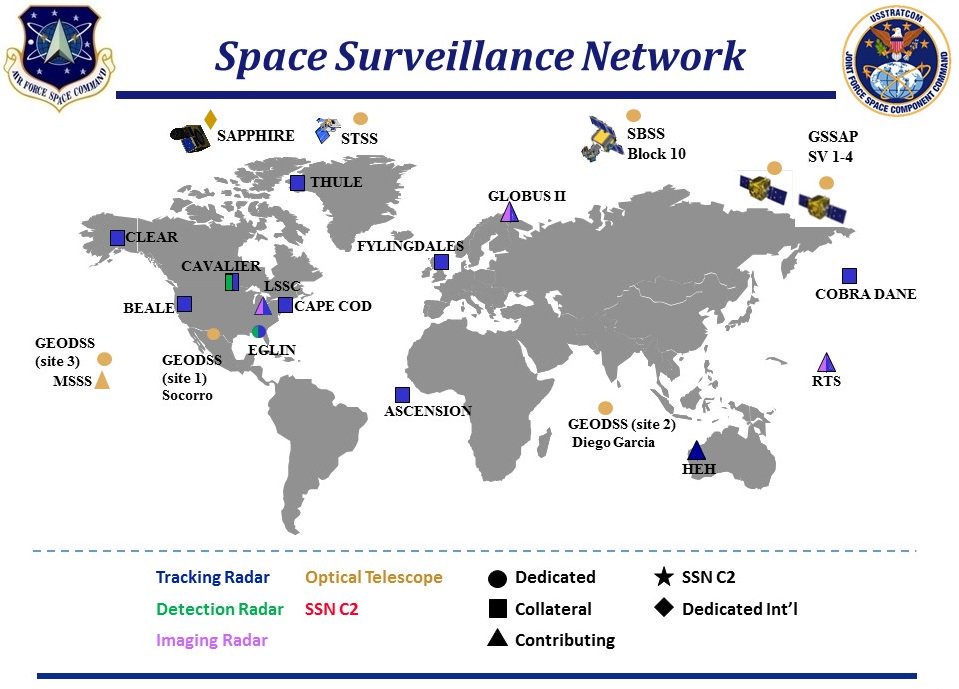
Space Data Association (SDA)
SDA is an international organization of satellite operators working to, in part, enhance the “accuracy and timeliness of collision warning notifications.” The Association is driven by the member’s needs for in-time SSA information, with the members being mostly GEO satellite operators (EUTELSAT, INMARSAT, and others). The data shared amongst its members are not made public, and their source is the satellite operators themselves.
International Scientific Optical Network (ISON)
ISON is an international project, currently consisting of about 30 telescopes at about 20 observatories in about ten countries. ISON, as a civilian global space surveillance system, covers the whole GEO and is capable of searching and tracking objects both on GEO and various classes of HEO orbits (GTO, Molniya, etc.). From the published papers and reports coming from the network, it is clear that the tracking capabilities of ISON are quite capable. Unfortunately, there is limited dissemination of their data, gated, and only valid for the analysis of past observations, not for future permissions. Participation in the Network seems to be gated too since there is no clear path of joining or an established process to contribute.
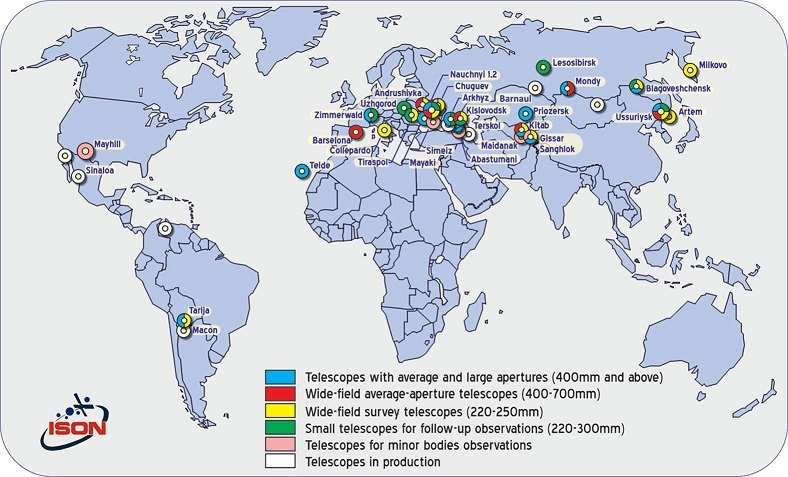
The amateur satellite tracking community – SeeSat-L mailing list
A network of amateur satellite trackers provides positional measurements as well as orbital elements for a subset of objects, both in LEO, GEO, and HEO. This subset consists primarily of military payloads from the US and its allies (e.g., France, Germany, Israel, Japan) for which the 18th Space Control Squadron does not release orbital elements. This network originated from satellite trackers initially involved in Operation Moonwatch, the citizen scientist program, to track artificial satellites since the launch of Sputnik. Observers in this network are increasingly using more sophisticated sensors and software, increasing the accuracy of the orbital elements, as well as the number of objects that are tracked. Dissemination of data is open and readily available to the public, although confined mostly around the subset of objects that represent the group’s interest.
Various militaries
Various militaries around the world maintain a particular SSA capability, and in some cases, we do have public data around their existence. For example, the French military operates the GRAVES radar to track objects in predominantly LEO, while Germany operates GESTRA under GSSAC with multiple locations. Eight EU Member States (France, Germany, Italy, Poland, Portugal, Romania, Spain and UK), with representatives from National Designated Entities and Ministries of Defence and EU SatCen participate in the EUSST Cooperation, joining SST efforts. No data or orbital elements are made public.
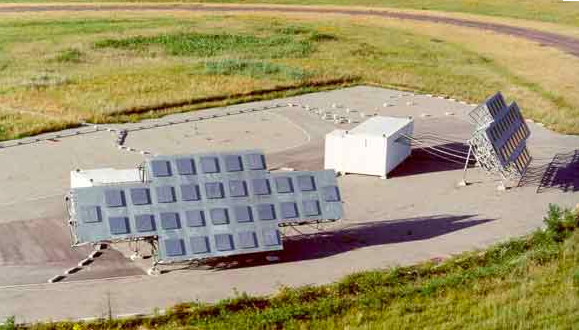
Private companies
Commercialization of SSA services has been an approach that some private for-profit companies are exploring. Most notably, LeoLABS is providing paid SSA services for LEO objects, using data from their radar facilities. No data or orbital elements are made public.
The need for open data in SSA
We in Libre Space Foundation believe that all people shall have access to outer space, space technologies, and space data. Space Situational Awareness data are critical for our understanding, peaceful coexistence, and exploration of space. We believe that to achieve that, all SSA data should be gathered, processed, licensed, and disseminated as Open Data.
The benefits that Open Data can bring to SSA:
- Transparency. Open Data supports public and comprehensive oversight of governmental and agency activities. For instance, Open Data makes it easier to monitor all space activities regardless of their classified or not status. It also encourages greater citizen participation in space affairs and supports verifiability, collaboration, and cross-checking of analysis.
- Service Improvement. Open Data gives citizens and organizations the raw materials they need to engage in the space sector and contribute to the improvement of public SSA services. For instance, anyone can use Open Data to perform their orbital determination analysis and engage with existing services for improvement suggestions.
- Efficiency. Open Data makes it easier and less costly for governments and agencies to discover and access their data or data from other organizations, which reduces acquisition costs, redundancy, and overhead. Open Data can also empower anyone with the ability to alert for gaps in public datasets and to provide more accurate information.
- Innovation and Economic Value. Public data, and their re-use, are critical resources for social innovation and economic growth. Open Data provides new opportunities for governments and agencies to collaborate with anyone by giving open access to data about those services. Businesses and entities are using Open Data to understand potential markets better and build new data-driven products.
The open way forward
As Libre Space Foundation, we are committed to establish and act upon an open way forward around SSA. We will be guided by our principles, express them in our manifesto, examine the technical possibilities, and craft a development and implementation way ahead.
Principles
The following principles should guide space Situational Awareness:
Open Data
Unconstrained access to all data related to SSA, licensed appropriately, and treated as a public resource.
Modern technology stack
The technical implementation should be based on a modern technology stack, modular, expandable, and open source.
Verifiability
Due to the fundamental nature of the SSA data, we believe that verifiability should be an essential aspect of our data and processes, achieved through the openness of our technology stack, allowing for auditing by anyone.
Openness in participation
SSA data generation, processing, and consumption should be open for participation to all who wish to contribute without gated access.
Technical Possibilities
Sources of SSA data can be categorized in the following groups:
Active RF tracking
Essentially Radar systems emitting RF signals that then can be received and analyzed in a closed-loop order. This methodology is a high-cost, high-quality approach undertaken by most of the active SSA players currently (mostly governments through their military branches).
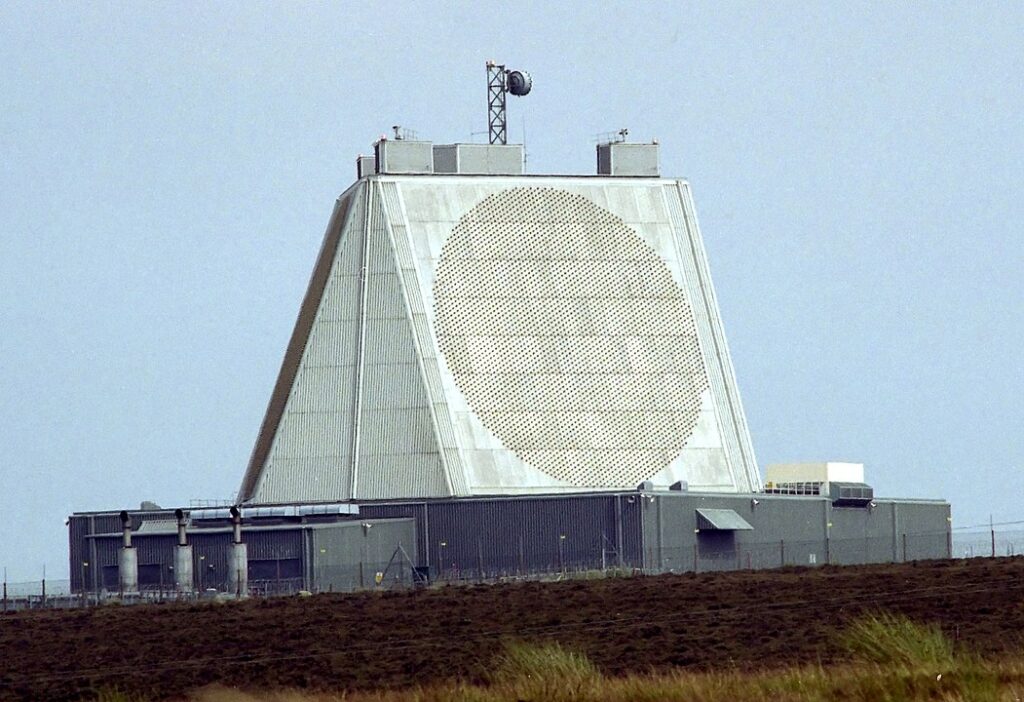
Passive RF tracking
Opportunistic RF tracking is an SSA surveying method utilizing pre-existing RF signal sources beyond someone’s control (radars or other transmissions), tracking the reflections on space objects from those sources. Given its nature, it can yield valuable results but, at the same time, is at risk of intermittent operations since one cannot have control over the origin of the RF source.
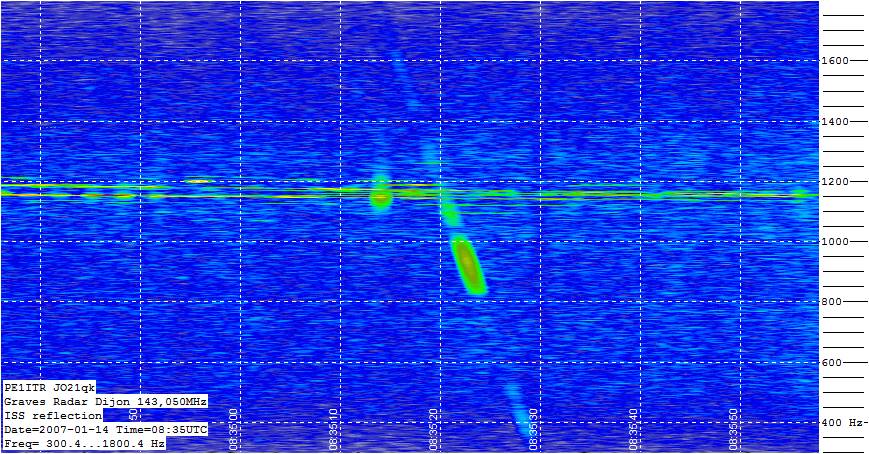
Signals (TM/TC&C)
Tracking signals (Telemetry or Telecommand and Control) from active space objects and specifically their doppler shift properties can yield substantial data that can be translated to quality SSA measurements. Although such an approach is limited to active space objects, it requires minimal development costs since it can utilize the existence of a global RF ground station network (like SatNOGS) without any additional changes needed to the space missions.
Optical
Optical tracking of visible light reflected upon space objects provides one of the best SSA data-producing methods. Readily available sensors, lenses, and mounts can be used to capture optical observations of space objects, yielding high-accuracy results. Its shortcomings are its dependence on sky and timing conditions and for some orbits its need for high-end costly optical systems (e.g., fast telescopes with sensitive sensors)
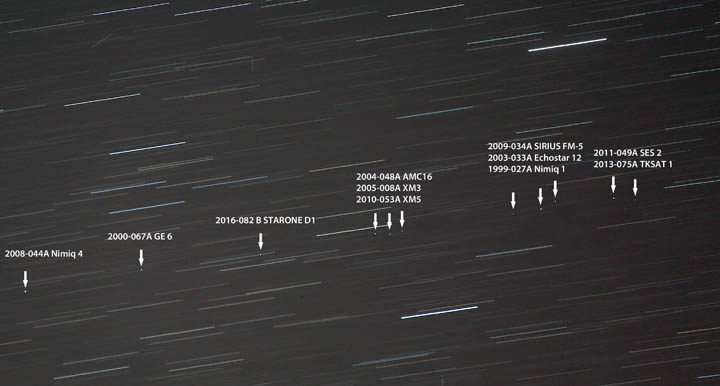
ID-tags and experiments in LEOP
A relatively modern and innovative approach would be to equip space objects with active or passive ID tags emitting identification codes passively or when probed, allowing for early identification and continuous tracking of those objects. Since this method requires additional development and cost for missions, it is imperative to standardize it and for a low-cost open-source implementation to be delivered, readily available for integration on future missions. Such an approach draws many parallels to existing models of tracking and monitoring on other domains (e.g., AIS for marine objects and ADSB for airborne objects) and also requires a legislative mandate to be effective, which in turn involves policy changes on a universal scale.
SatNOGS DB as a hub of information
SatNOGS DB has established itself as a hub on RF related information for hundreds of space missions so far. Given then the source of information is crowd-sourced and continues to expand, we believe that SatNOGS DB can be furtherly expanded to include SSA information and act as a hub for multiple sources of SSA data and their derivatives (orbital elements, conjunction reports, etc.) Since LSF develops SatNOGS DB as a modular project allowing for multiple sources and data consumers, we could envision an ecosystem where the processing of this data (automatic or manual) can also happen outside the SatNOGS DB instance and re-submitted for sharing through it. Collaboration with existing established hubs or information (like Celestrak/AGI) and up and coming open data approaches on specific subsets of SSA data (like TruSat) will be vital for establishing a collaborative and sustainable ecosystem around open SSA data. To that end, we will like to invite all possible collaborators to engage in our efforts and the public discourse around them.
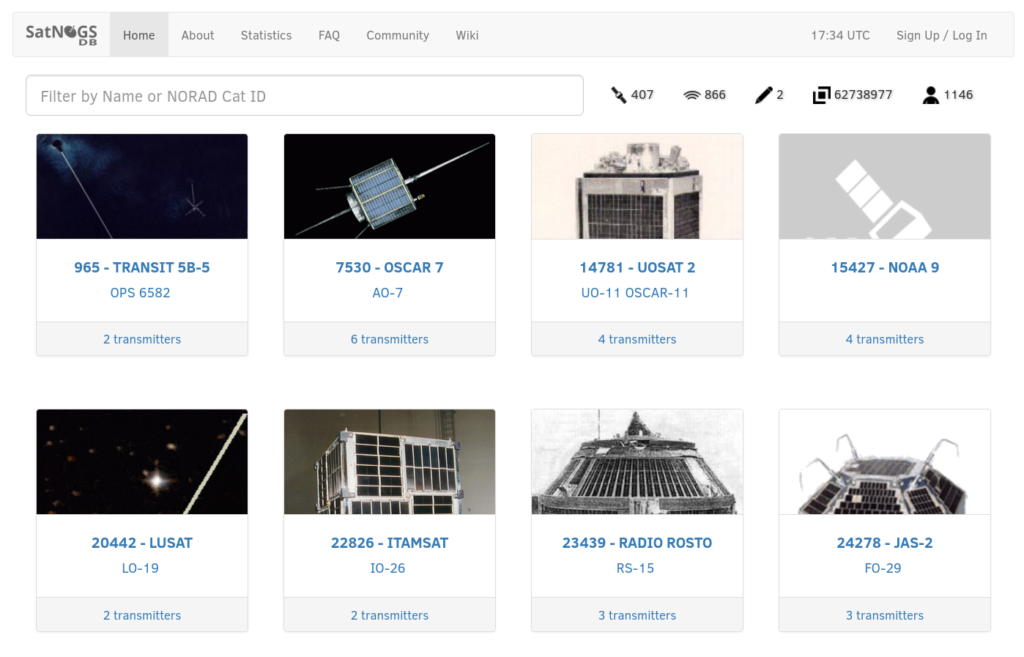
Obtaining open SSA data – Developments for Libre Space Foundation projects
The SatNOGS project provides natural extensions that will allow the Libre Space Foundation to provide open SSA data:
LEOP identification work
The SatNOGS network of ground stations observes satellites transmitting in the amateur VHF and UHF radio bands to demodulate and decode satellite telemetry. Telemetry is stored publicly in the SatNOGS database (SatNOGS DB). The observations rely on orbital elements provided by 18SPCS/CSpOC, redistributed by celestrak.com, CalPoly, or AMSAT, which are used to perform Doppler correction and antenna pointing. The combination of SatNOGS Network and SatNOGS DB allows LSF to provide independent data on the identification of satellites. Satellites with active transmitters can be identified through either a priori known transmitter frequencies, modulation schemes, and demodulated telemetry containing satellite call-signs. The orbital elements used for Doppler correction and antenna pointing allow LSF to determine which orbital elements match the observed frequencies of an identified satellite, hence linking a satellite to CSpOC orbital elements. LSF is currently already sharing this SSA data publicly with TS Kelso (Celestrak/AGI), as well as individual satellite operators. This functionality could be expanded to frequencies outside of the amateur VHF and UHF bands (i.e., 401MHz, 466MHz, S-band).
More information about this effort can be found in our satnogs-ops repository.
Tracking RF transmissions
LSF is currently developing functionality to extract Doppler curves from observations obtained through the SatNOGS network of ground stations. Observations are presently Doppler corrected using orbital elements by 18SPCS/CSpOC. Still, deviations of the observed frequencies, either from recorded spectrograms (waterfalls) or demodulated telemetry, can be used to obtain Doppler curves. These Doppler curves can be used to constrain orbital elements. They may allow LSF to generate a catalog of orbital elements to track satellites that are observed through the SatNOGS Network. This functionality would be available for actively transmitting satellites, and likely limited by the time accuracy and frequency stability of SatNOGS stations, as well as the frequency stability of the transmitter onboard the satellites.
Development of satnogs-network and satnogs-client are heavily influenced by this approach and you can track the progress on their respective repositories.
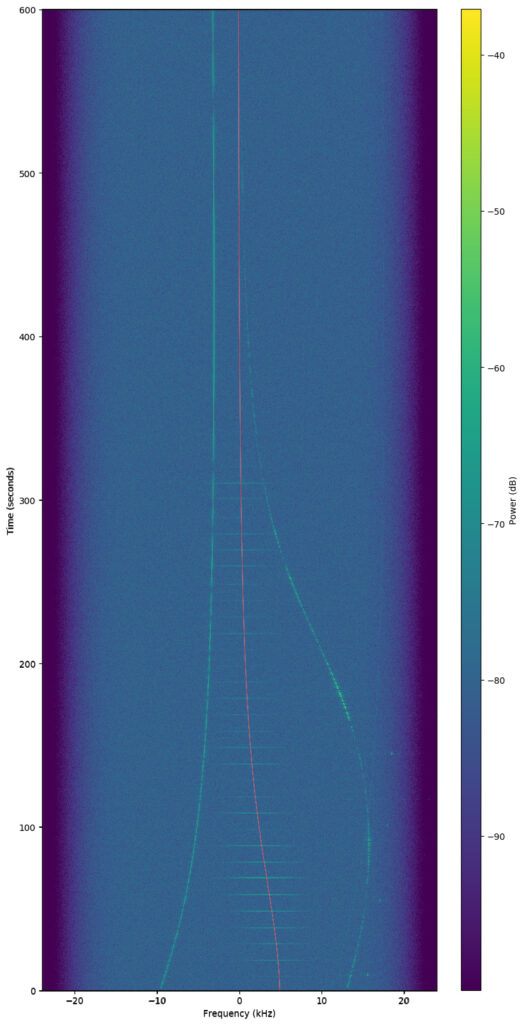
Passive RF tracking
Currently not under development, but SatNOGS client/Network/DB could be expanded to include the estimation of orbital elements from active radar reflections, possibly using a set of dedicated stations spread over a region (e.g., Europe). Such an approach would generate Doppler curves and orbital elements for any object bright enough to be picked up, though only feasible if radars are active (outside of LSF control). We should explore the legal aspect of such an endeavor since there are unanswered questions around it in various jurisdictions.

Network of Optical Ground Stations
Building on the experience of designing the SatNOGS open-source framework for demodulating and decoding satellite telemetry using cheap off-the-shelf hardware, LSF is investigating developing a similar open-source framework for video and photo-based satellite tracking ground stations. Using recent CMOS technology as well as software development, automated detection, identification, and position determination of LEO satellites in video observations is feasible. This approach would generate positional measurements that serve as input to the determination of orbital elements of satellites, as well as to characterize the optical behavior of satellites.
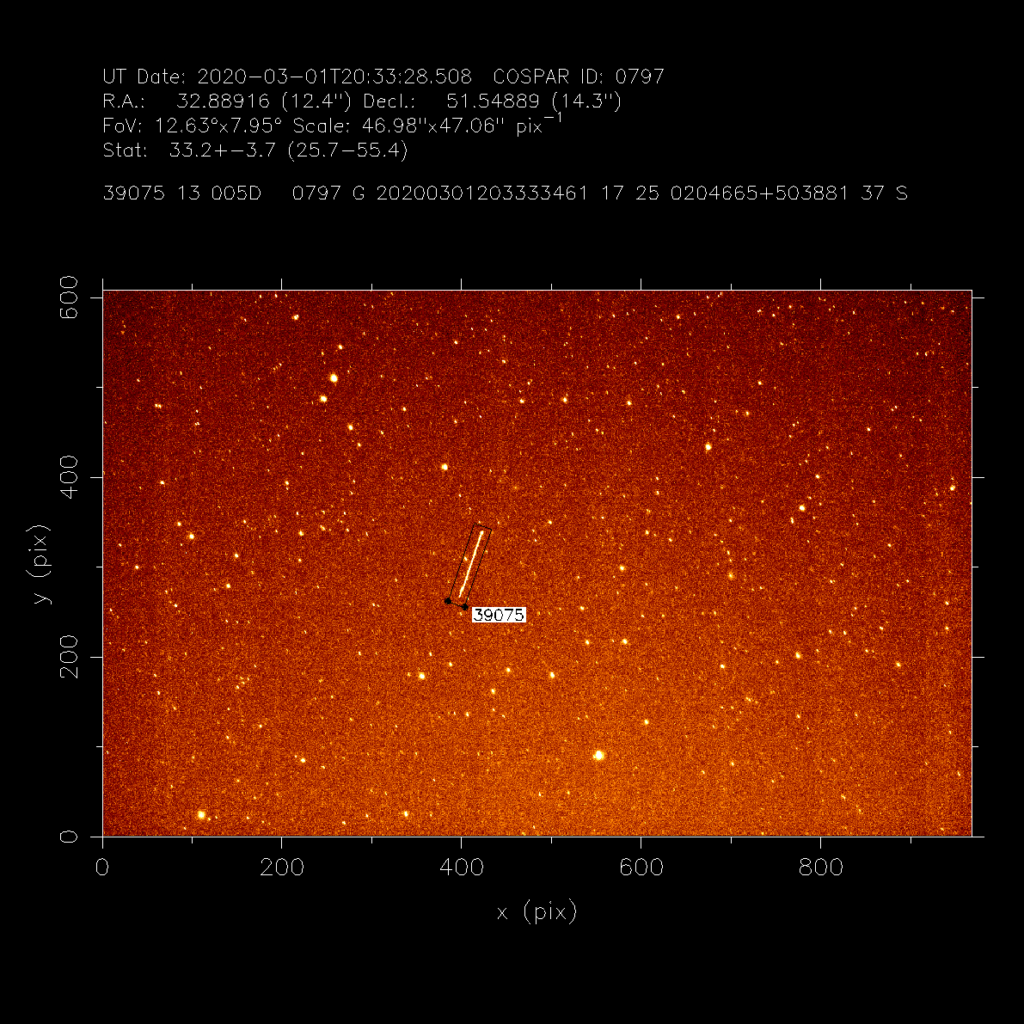
LEOP and ID-tag experiments
Through the development of its next space missions QUBIK-1 and QUBIK-2, Libre Space Foundation is testing In-Orbit a set of technologies to allow for the earliest identification possible of a space object, based on its unique RF transmissions, using the global aspect of the SatNOGS Network.
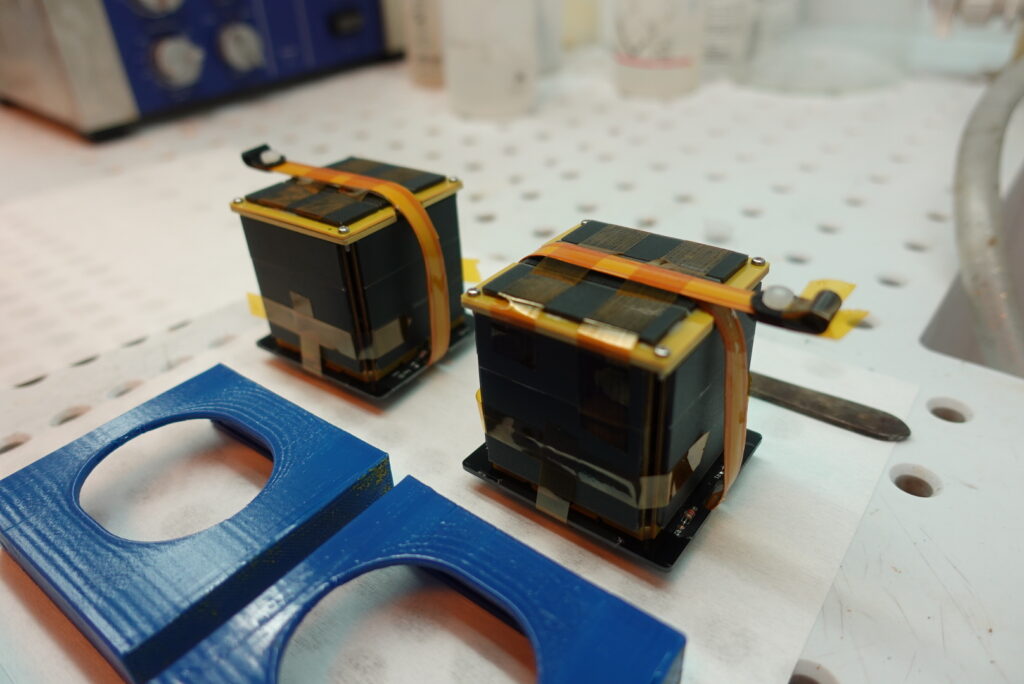
Join us on this open way forward for Space Situational Awareness data. Contribute to the repositories, and join the discussion in our forums.
Per liberum, ad astra.
Comments
3 responses to “Space Situational Awareness – The story so far and an open way forward”
This is a very welcome addition to the ecosystem of tracking objects in space. I am a member of SeeSat and track satellites with a digital camera, but previously was a US Air Force orbital analyst for what would become the 18th SCS.
One excellent reason for more openness is the occasional object that reenters and impacts the ground – but is never mentioned by the US and Space Track. The article below talks about this situation:
https://www.thespacereview.com/article/3397/1
It does take a high level of expertise to track satellites, we are not going to see a lot of enthusiastic amateurs doing this. The future of SeeSat is in question also since many members are well past retirement age.
[…] Thompson isn’t the first to offer his recommendation that a shared database of objects is needed, much as we enjoy in the case of the global maritime industry, so we’re not rushing to step on […]
[…] Thompson isn’t the first to offer his recommendation that a shared database of objects is needed, much as we enjoy in the case of the global maritime industry, so we’re not rushing to step on […]